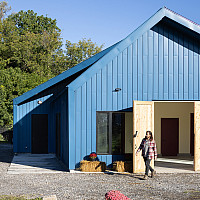A team of School of Architecture students led by Julia Czerniak, associate dean and professor and Professor Ted Brown have spent the last five months immersing themselves in the culture, values, history, and peoples of two towns on the banks of Narragansett Bay, Rhode Island, as part of the Envision Resilience Narragansett Bay Challenge, which called on university students around the country to develop adaptive and creative solutions to sea level rise.
Sponsored by ReMain Nantucket, the challenge, by way of a spring 2022 design studio, tasked multidisciplinary teams of graduate and undergraduate students from six participating universities—University of Rhode Island, Rhode Island School of Design, Roger Williams University, Syracuse University, Northeastern University and the University of Florida—with reimagining at-risk sites in the Narragansett Bay region of Rhode Island through an iterative, design-driven approach.
The students’ mission was to develop innovative pathways forward in the face of sea level rise based on the NOAA (National Oceanic and Atmospheric Administration) high curve. Based on these projections, Narragansett Bay will see three feet of sea level rise by 2050, five feet by 2070, seven feet by 2085 and nine feet by 2100.
“Instead of experiencing anxiety and paralysis in the face of climate change, we have a window of opportunity to imagine how to adapt and even thrive in the future,” says Wendy Schmidt, founder of ReMain Nantucket. “While the Challenge began as an exercise in big ideas, we hope it will also spur big action—in Narragansett Bay and in all the world’s coastal towns and cities, which hundreds of millions of people call home.”
Czerniak and Brown incorporated the challenge into their spring 2022 visiting critic studio, “Design Scenarios for Adaptive Coastal Communities” that takes the position that although protection is one way of addressing rising water, we must engage climate change not only through mitigation but by reexamining our lifestyles and patterns of consumption.
“The broad charge is to rethink our world, not simply save it,” says Czerniak. “There are a lot of wrongs that can be addressed.”
The students focused on the town of Warren and the village of Wickford, two small—and quite different—coastal historic communities along Narragansett Bay that share a common future; they are slowly going under water. Through researching moments of natural and cultural adaptation through time and across scale, traveling to the sites for ground truthing, and meeting with local experts and residents, they tested a set of design scenarios for each of the sites to adapt to the challenges of climate change and be resilient to future changes through the lens of architecture.
Using scenario planning, an apt approach that offers a way to assert control over a rapidly changing world by identifying assumptions and determining possible responses, the students set up the scenarios for each town as IF, THEN statements and then isolated and tested what it meant to alternatively RETREAT & ADAPT (moving settlement to higher ground and proposing novel ways of living that is more climate friendly); EMBRACE & ENGAGE (remaking shorelines to participate with rising waters and open them up to common use by human and non-human species); or PROTECT & ABSORB (by preserving invaluable resources by innovating ways to stay put).
In responding to the needs of these communities, the students presented ideas that are big, bold, and innovative, challenging entrenched ways of thinking and showcasing radical reimagining of these coastal areas.
Town of Warren
Known as the smallest town in the smallest county in the smallest state, the town of Warren, Rhode Island’s shorelines are bordered by Belcher Cove and Warren River. Though not quite as popular with tourists as its neighbors, Warren—once a bustling port for whaling and shipbuilding—still draws a steady seasonal crowd to its working waterfront and downtown. This ancestral land of the Pokanoket Nation, Warren continues to rely on its coastal location for much of its economy, way of life and recreation.
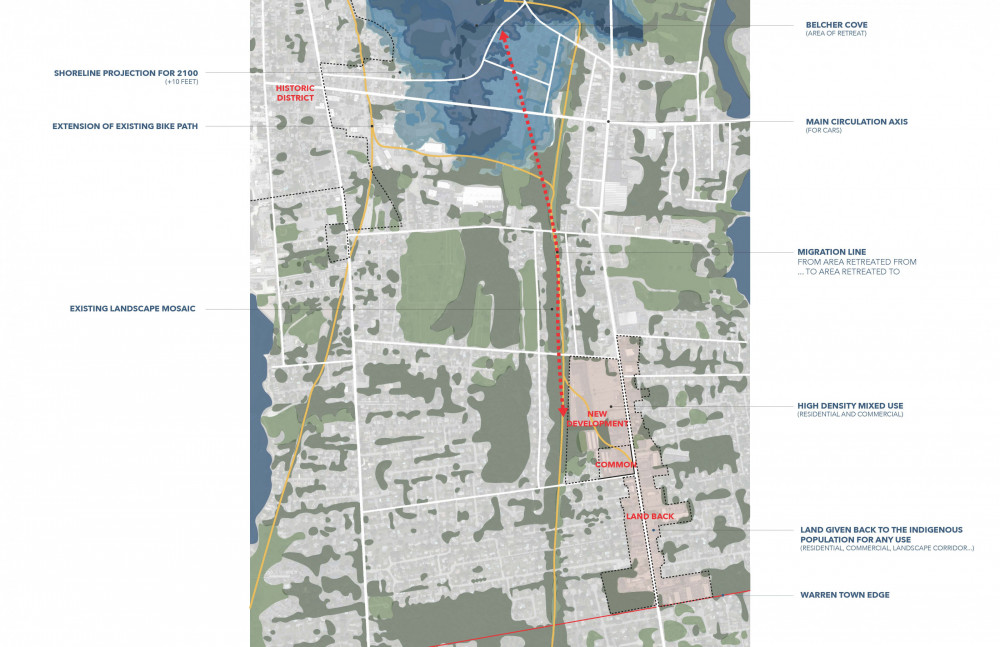
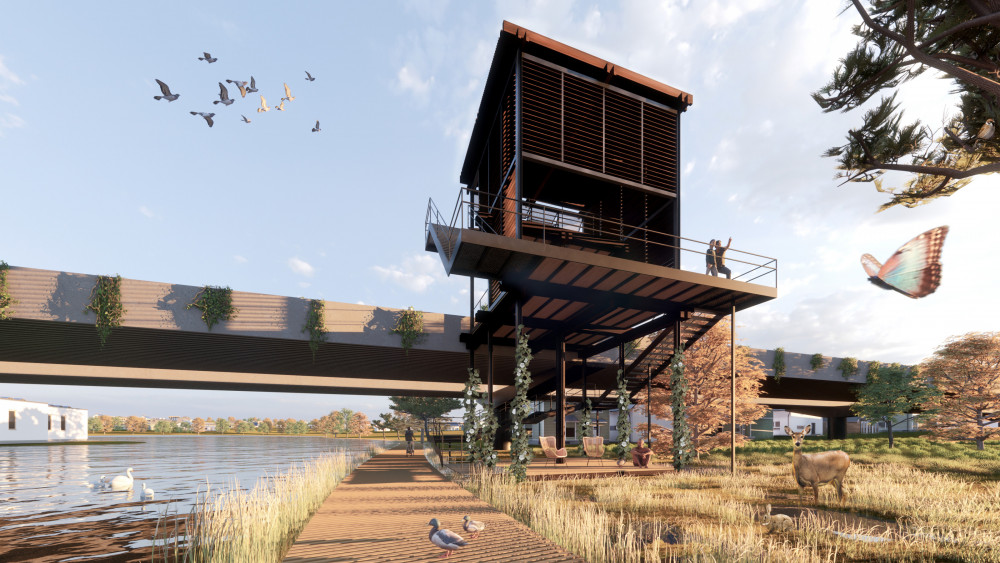
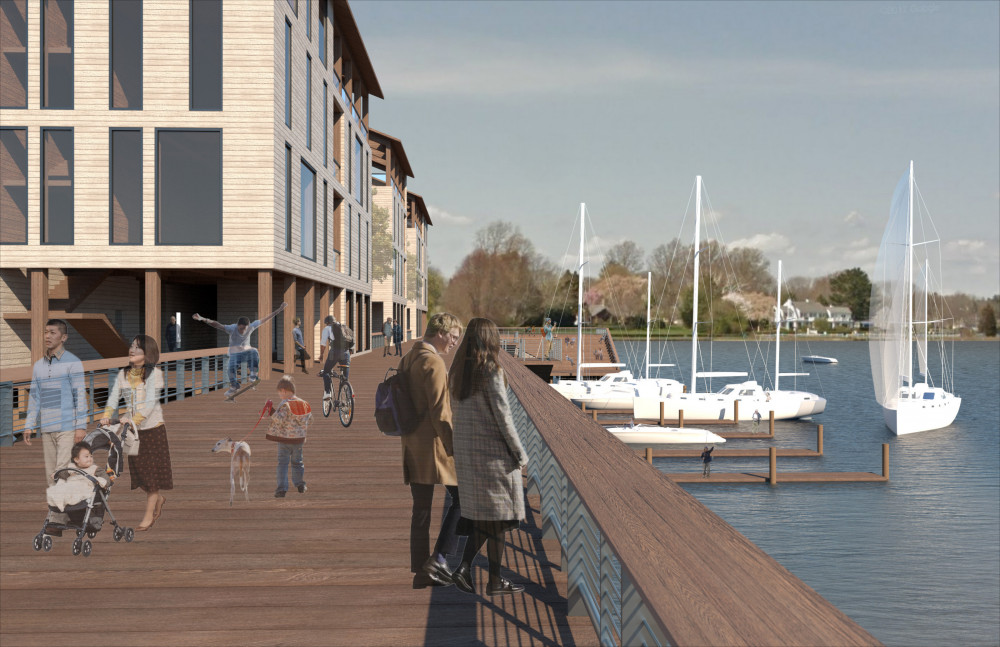
Village of Wickford
The original home of the Narragansett Nation, the historic village of Wickford sits on the west side of the Bay and is one of the oldest preserved colonial villages in the country, dating back to the 17th century, with structures from the early 18th and 19th century. With a long maritime and fishing history, Wickford’s economy remains tied to the water through boating, fishing, and tourism. Its population is double that of Warren and is a popular summer destination for sailing, shopping, and fine cuisine.
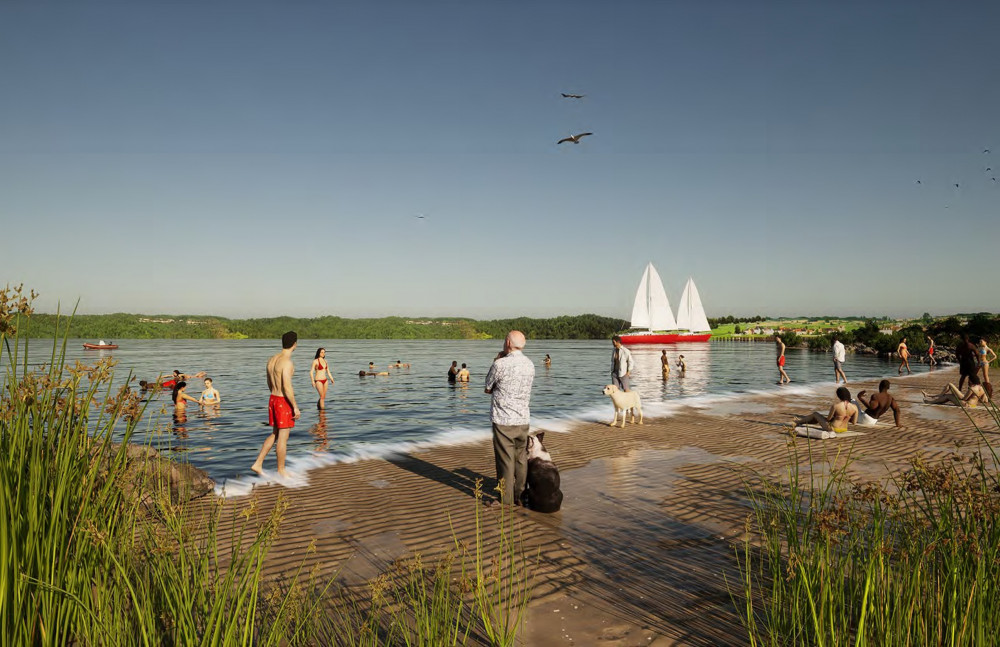
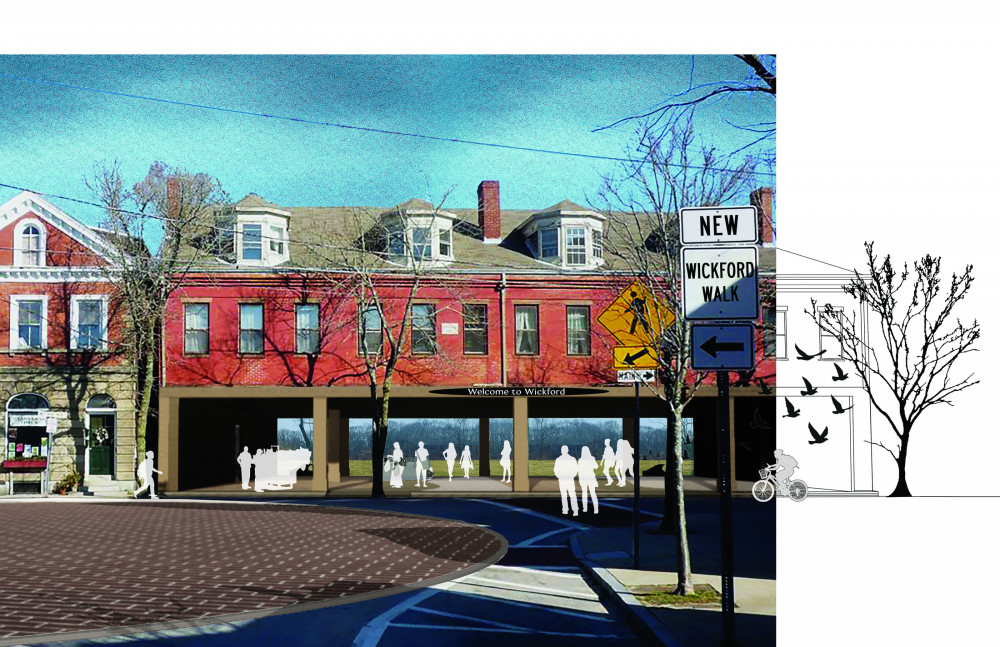
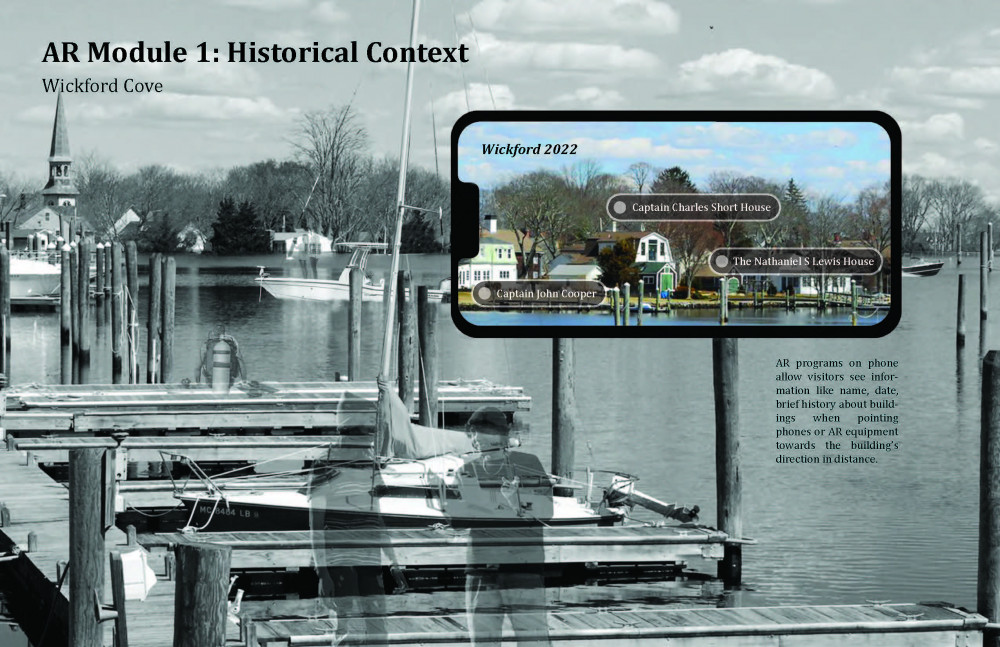
In late April, the students presented their ideas virtually to the larger Envision Resilience Challenge cohort, including teams from the other participating universities, during a final jury review, who commended them for their clear, impactful proposals, superb illustrations and articulate arguments.
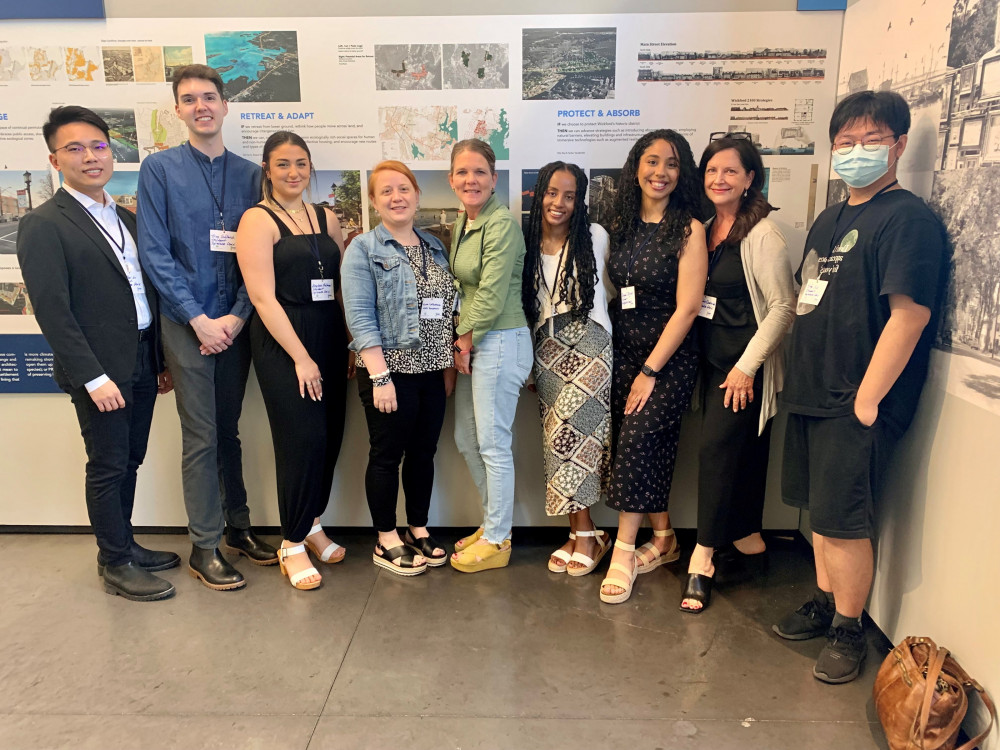
“We are delighted to welcome this exhibition to Rhode Island and to support ReMain Nantucket in this important work,” says Barnaby Evans, executive artistic director of WaterFire Providence. “This show is a wonderfully concrete and engaging extension of the conversations about the environment that we have been hosting here at WaterFire. These exciting proposals will expand our thinking and enrich our perspectives as Rhode Island communities work toward finding the best solutions to coping with sea level rise.”
For more information about the Envision Resilience Narragansett Bay Challenge, visit envisionresilience.org/narragansett-challenge.










